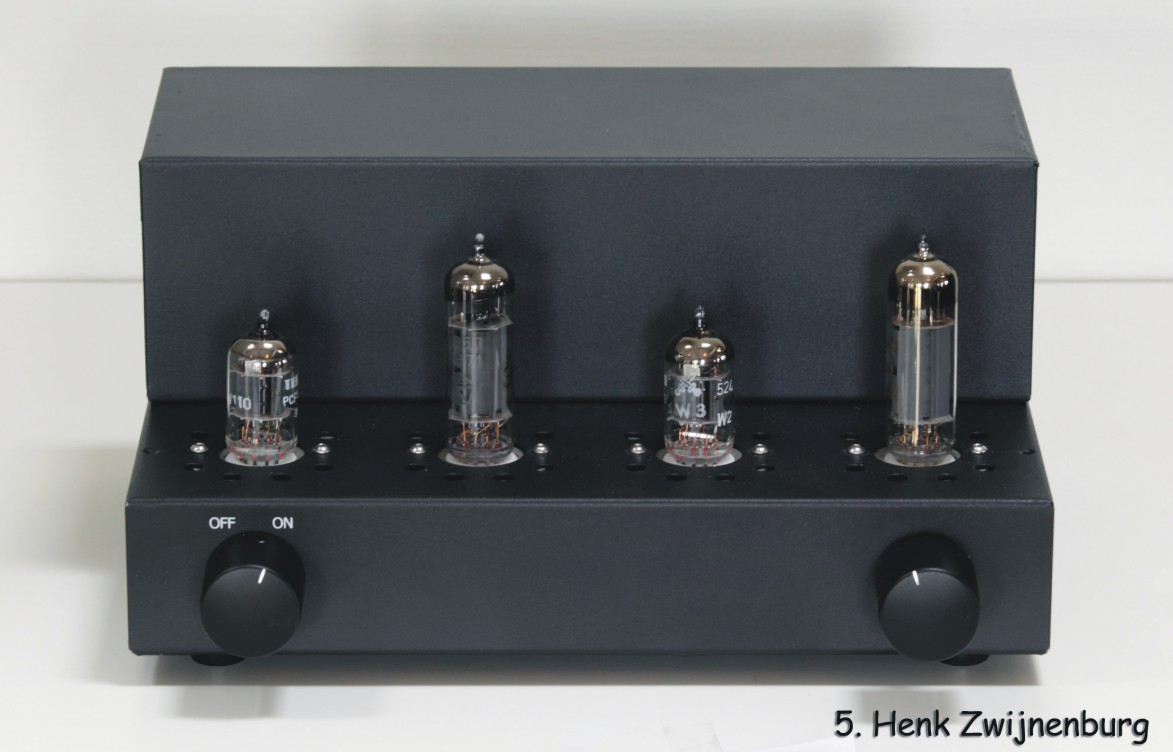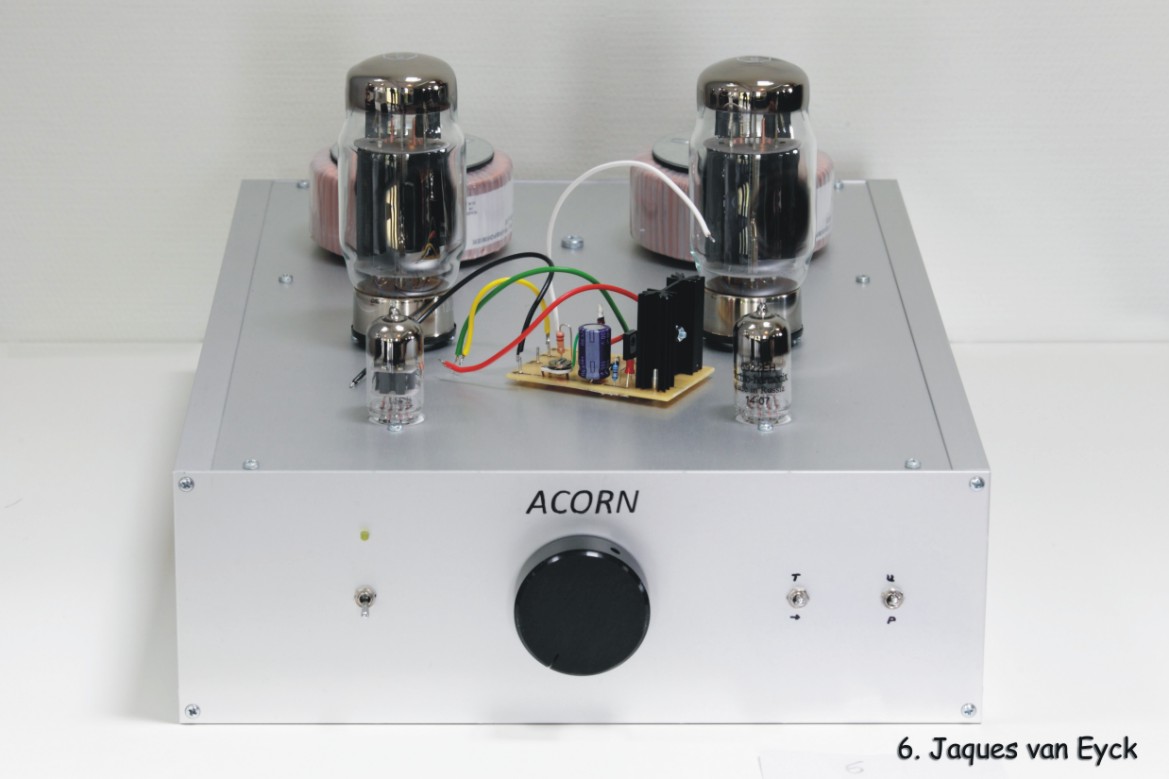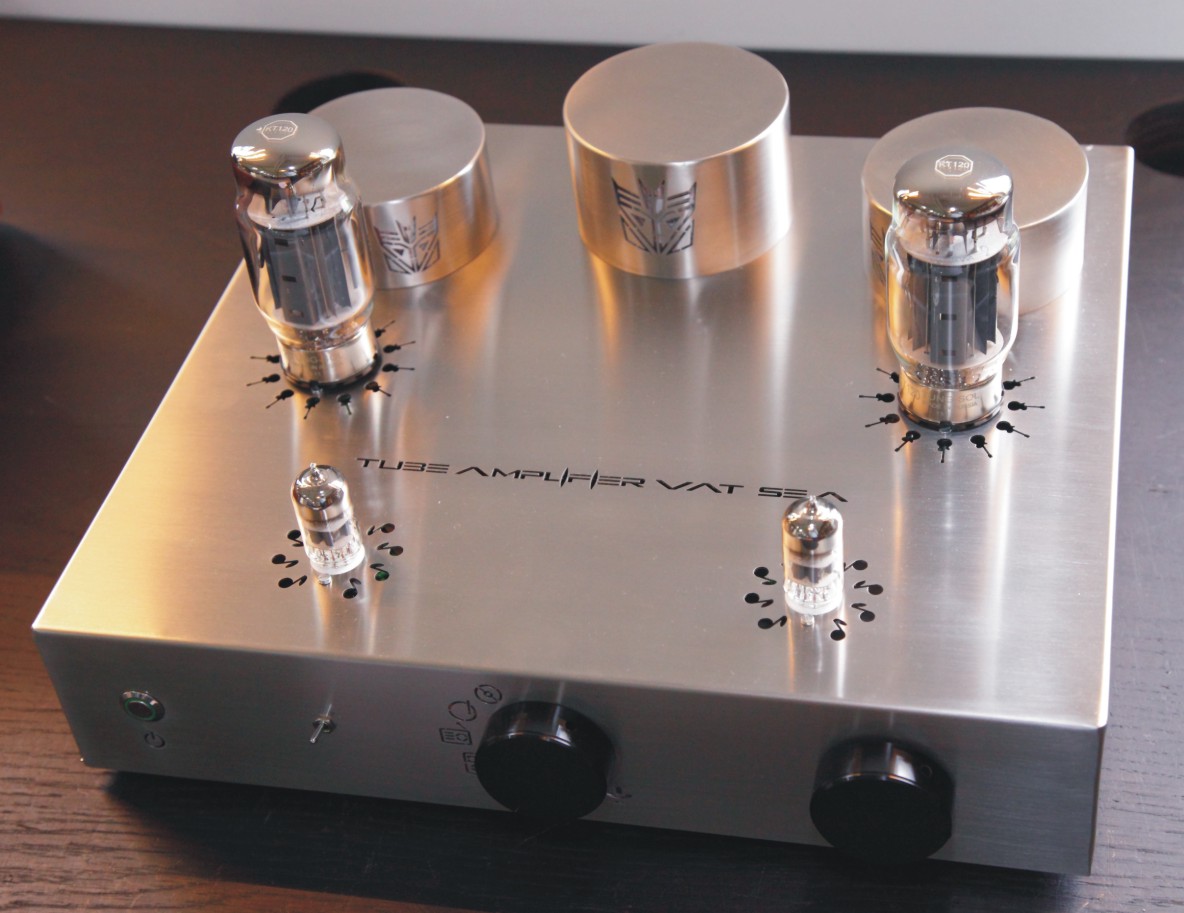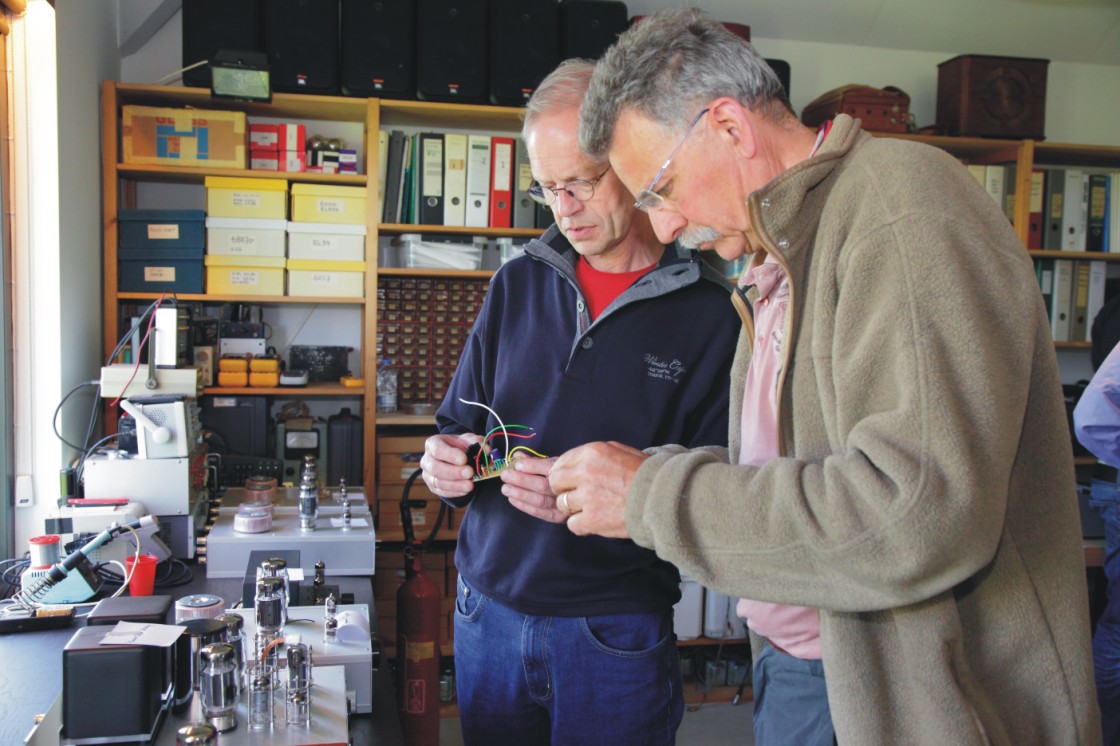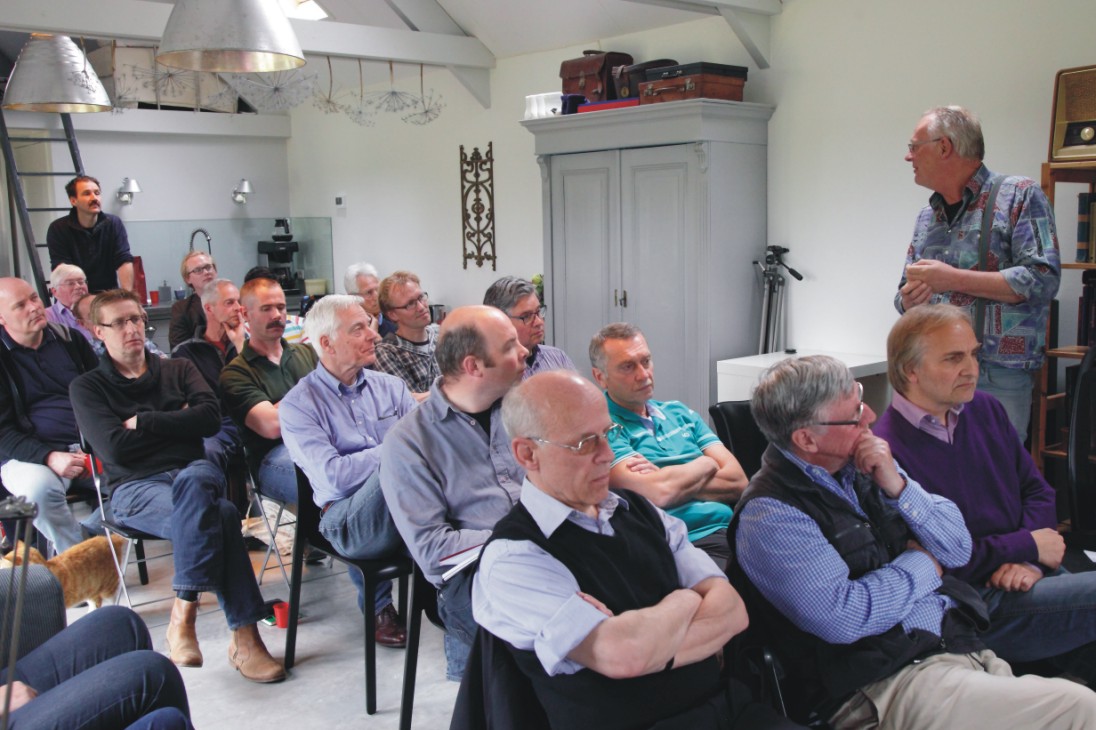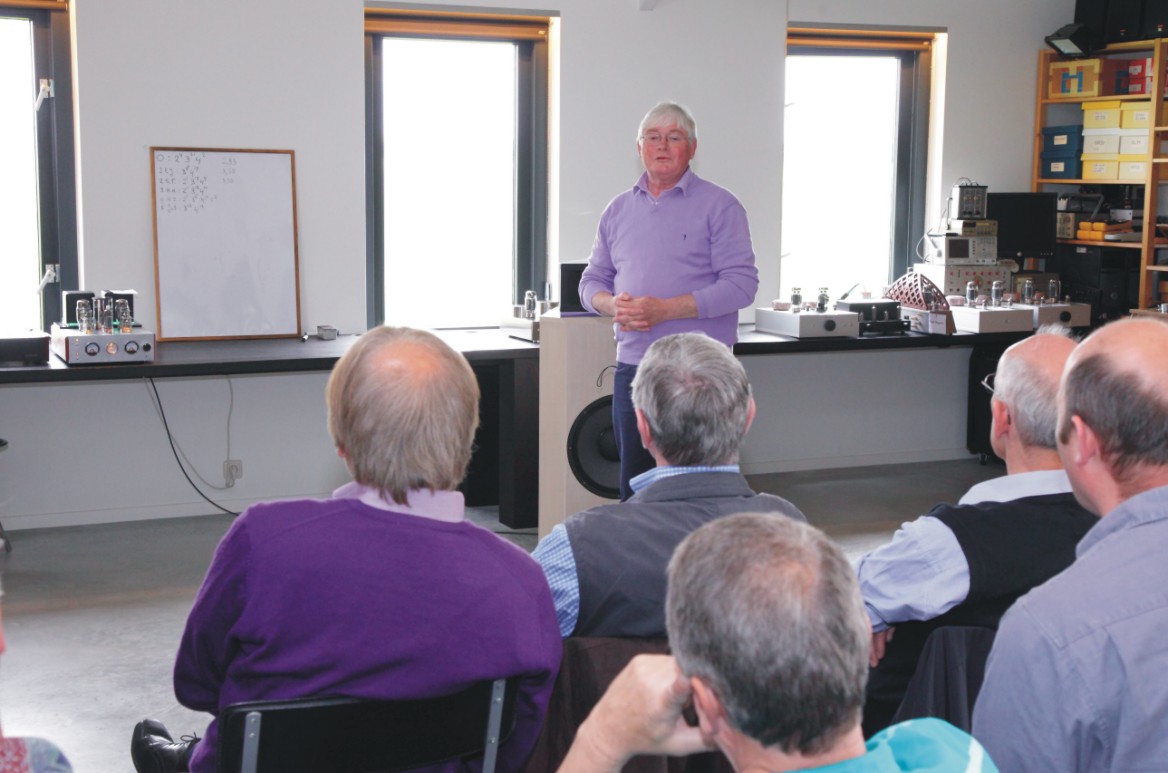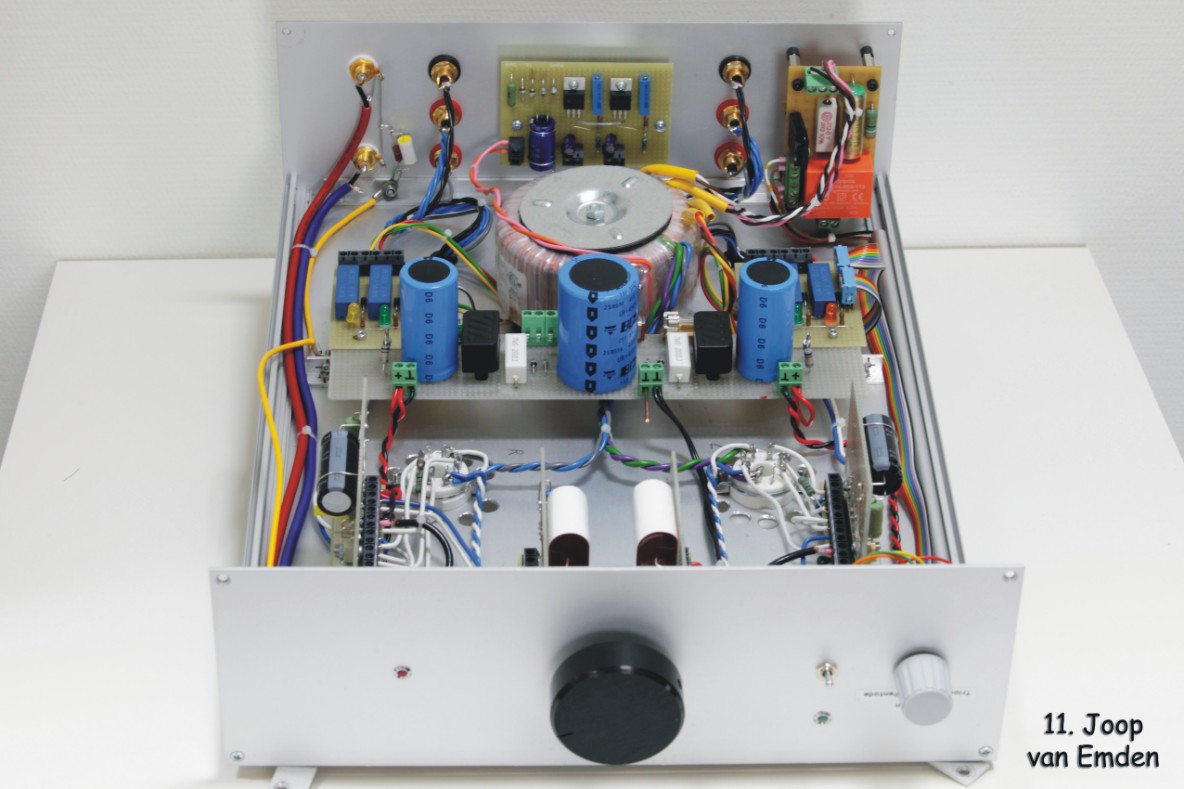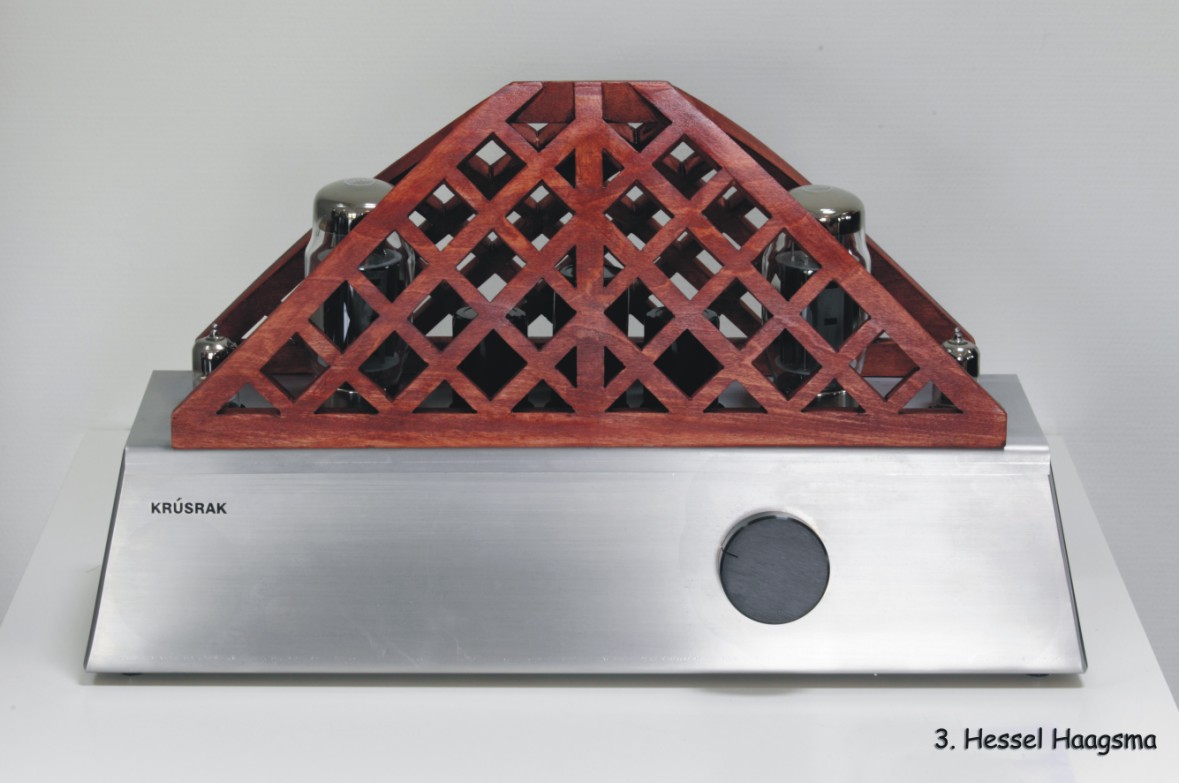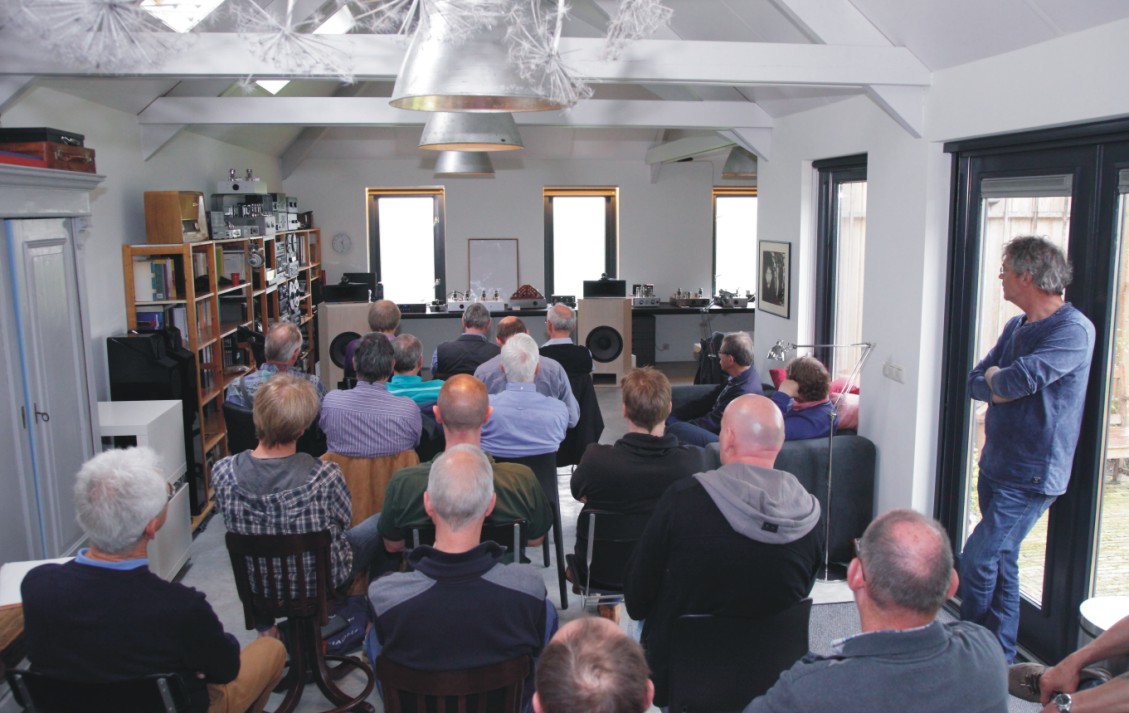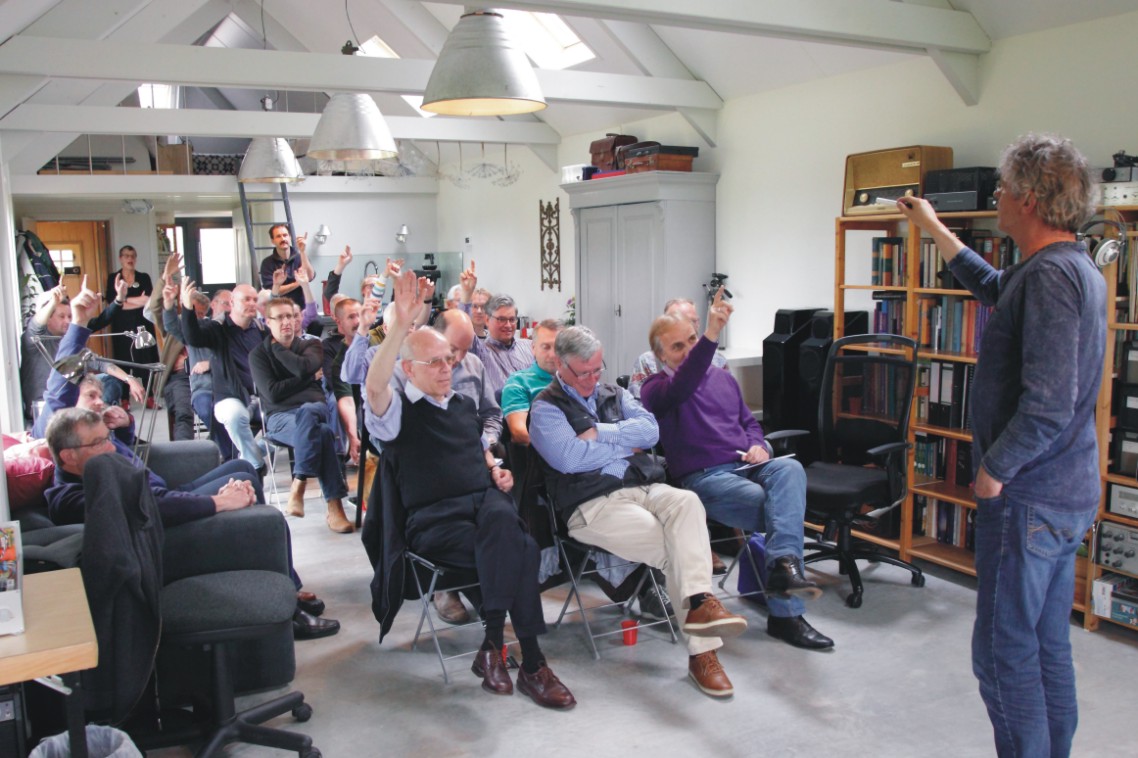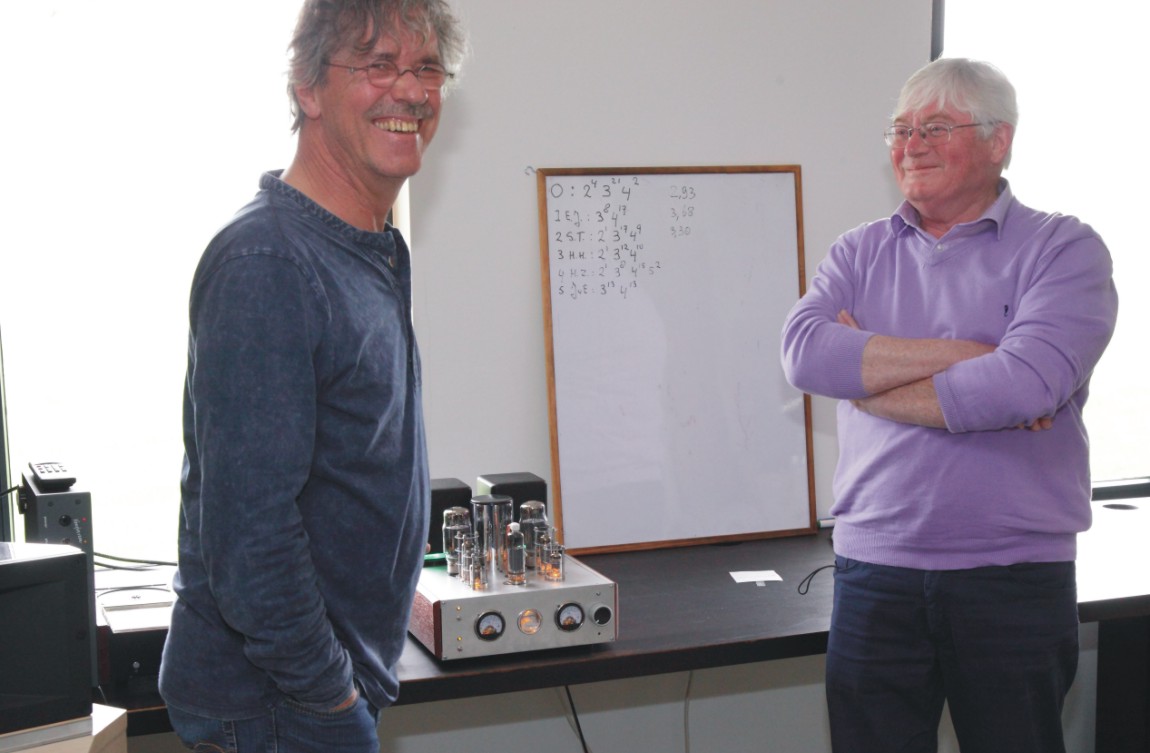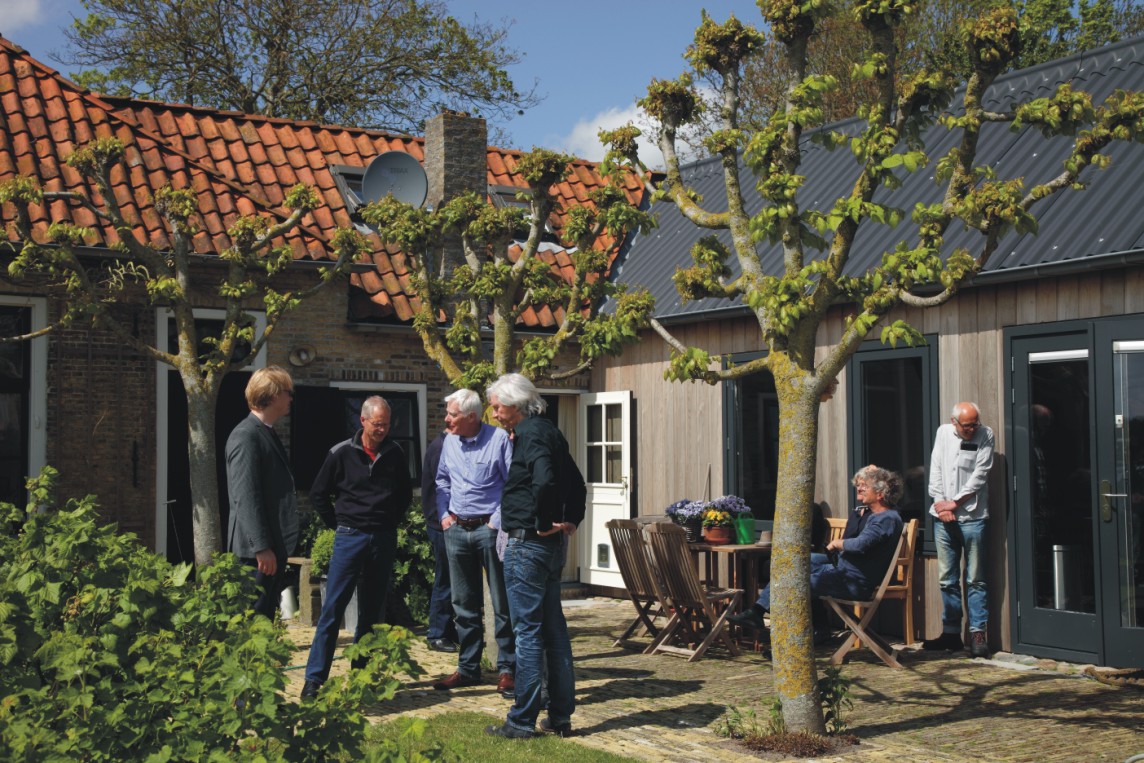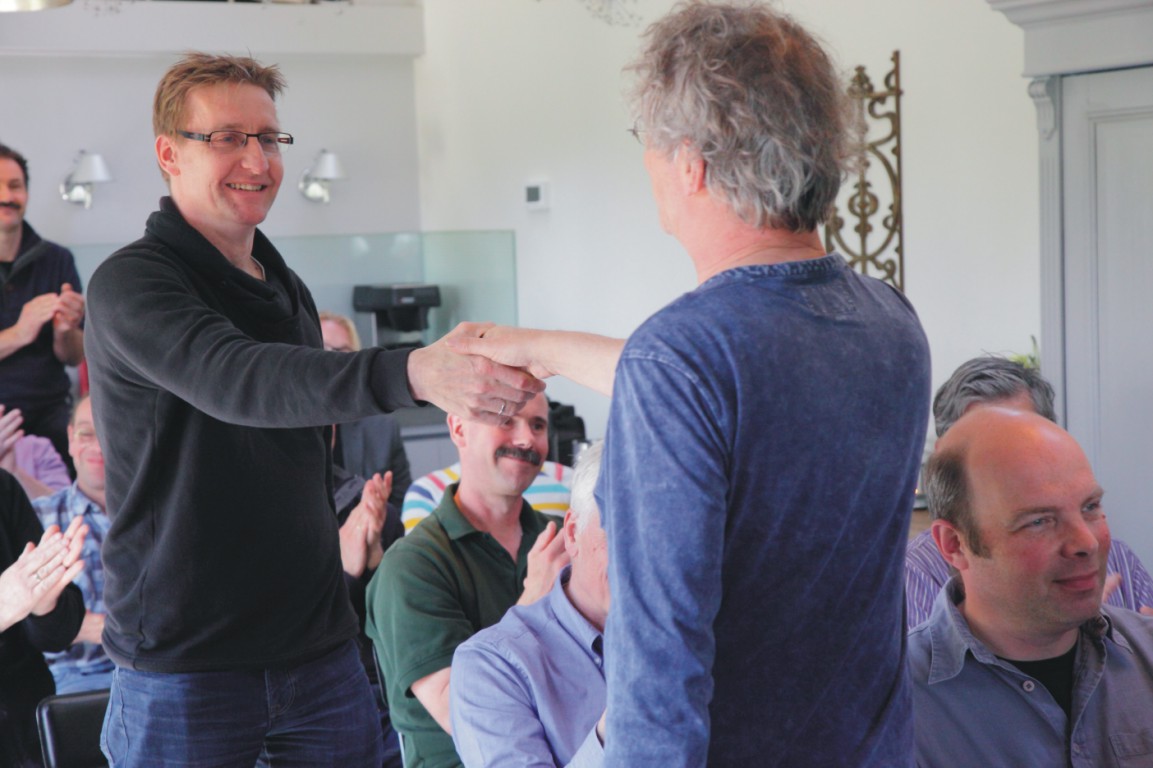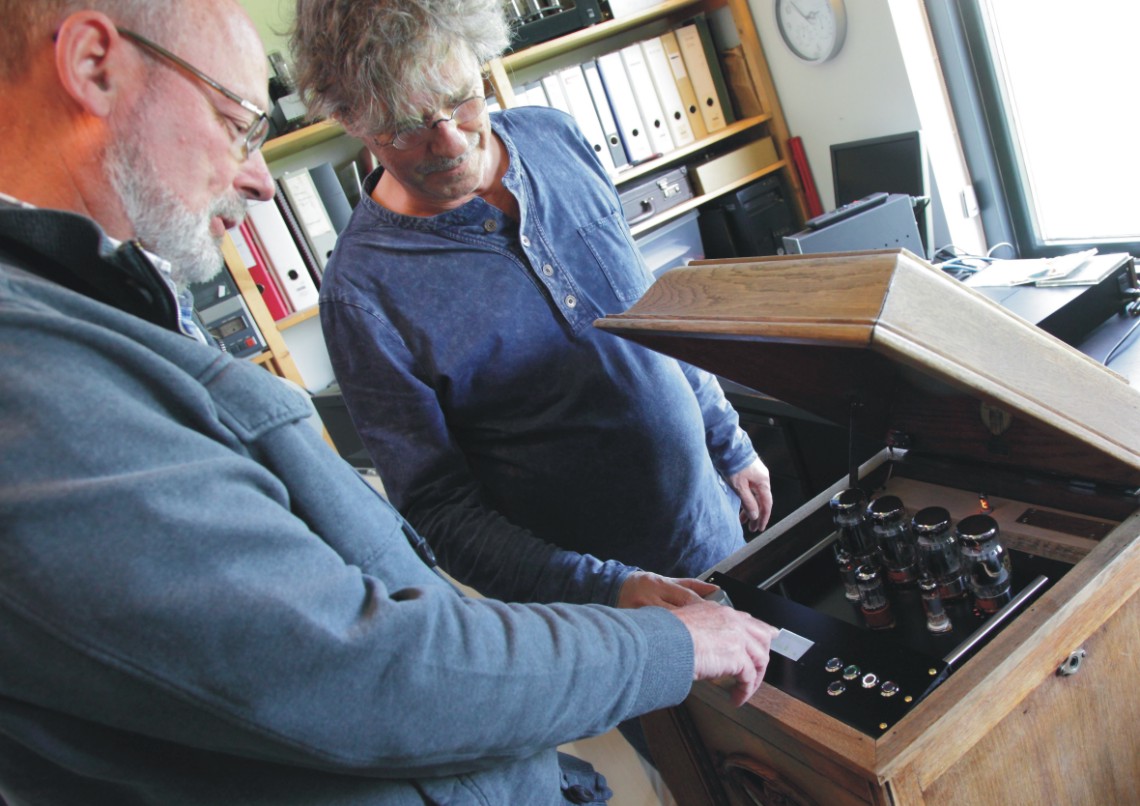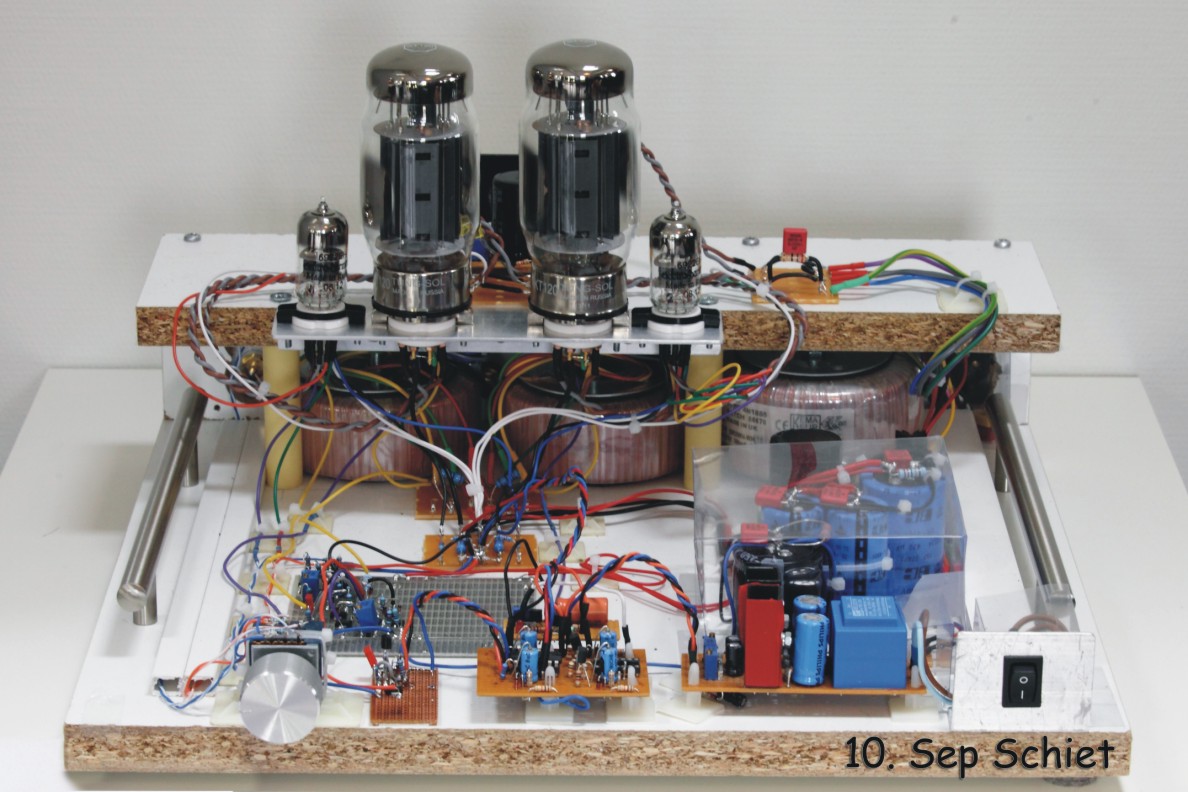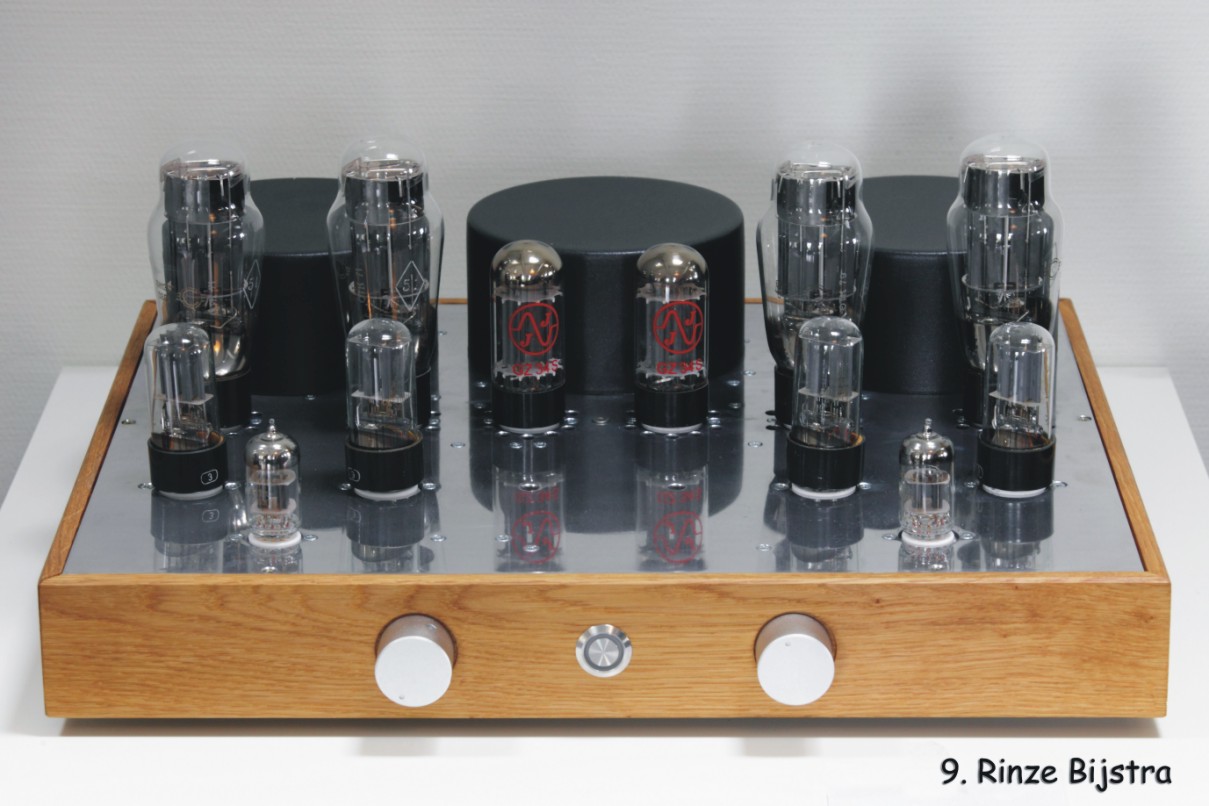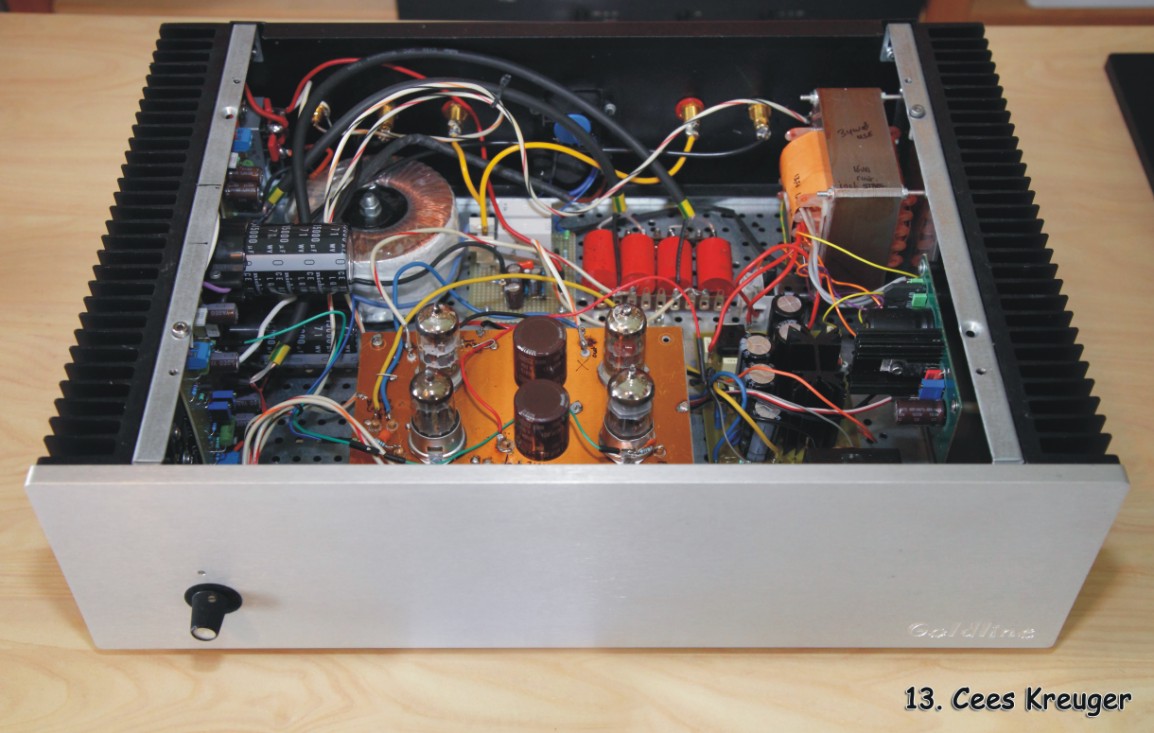This year the amp is a stereo single ended amplifier with KT120 power valves, and free to choose driver valve or semiconductors.
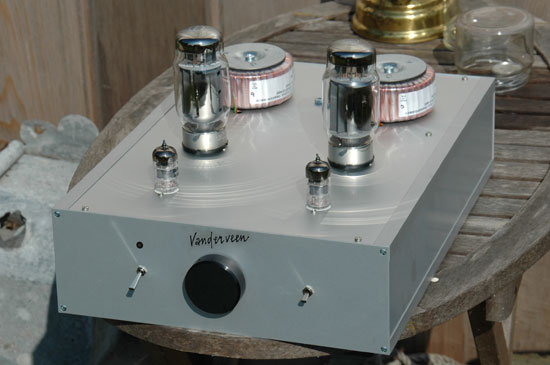
Every study year my Tubesociety students work on a special audio amplifier design. This year the amp is a stereo single ended amplifier with KT120 power valves, and free to choose driver valve or semiconductors. The new toroidal SE output transformer VDV-2512-SEE has 2k5 primary impedance plus 33$% UL-tap, 0/4/8 Ohm secondary and can handle 12 Watt. See www.ringkerntrafo.nl for availability as for the special mains transformer. Regular check this site for new inventions of my students. For any comments, please send an e-mail to
23-05-2015
The Future of Vatsea and Trans: The rest of 2015 I will use to translate the Vatsea-Trans concepts into a new DIY kit, available for all. It is my goal to design this kit completely with tubes, easy to build PCB and nice looking construction. The kit will be marketed in cooperation with Amplimo BV. Stay tuned with our websites.
22-05-2015
Trans based Vatsea amplifiers: This year I designed the Single Ended Vatsea-kit for my students with special toroidal SE-OPT’s and mains transformer. Amplimo constructed a limited number of these kits only for our experiments. In the kit I included the ECF802 where its pentode section was meant to be applied as a voltage driven current source. Its triode section should linearize the F-section. Immediately, while waiting for the kits to come, Henk Zwijnenburg started experimenting with his EL84-based SE-amp, using the EF86 as current source. See photo-21 and his sketch of schematics-22 where he later implemented the ECF802. Henk was the only one using other components than prescribed for the Vatsea contest. However, his contribution was of such importance that I invited him to take part in the contest and he scored second best! It is remarkable that Henk applies a coupling capacitor while I have prescribed in chapter 5 of my Trans-book that DC-coupling is mandatory. So, Henk does not obey my strict rules! I invite you to study his solution and find the explanation why his schematic does not change my rule. Jacques van Eijk used the BSP135 current source in his amplifier, expanded with a constant current source (CCS, decoupled with 100 uF) in the cathode of the KT120 power tube. This solution makes the amp insensitive to mains voltage variations. See photo-23 and his schematics-24 plus measurements. The distortion graphs show instability in the 20 Hz environment, caused by the small 100uF cathode capacitor (advice: apply 2200uF or larger). The winner of the contest was Edwin Reins. His beautiful laser engraved stainless steel amplifier contained the BSP135 current source combined with improved power supplies. See photo-25 and his description-26. Last but not least: Frank de Wolf made many experiments and evaluated his amp in LTspice. Unfortunately his power supply suddenly showed problems (oscillations) and we have not been able to audition his great work. Such can happen and I am really sorry for that.
21- Henk Zwijnenburg EL84-EF86-amp
22- Henk Zwijnenburg schematic
23- Jacques van Eijk
24-JvE schematics + measurements
25- Erwin Reins
26- Erwin Reins schematic
21-05-2015
Vatsea based amplifiers: Herman Kamminga (photo 10) applied EL34 power tubes instead of the advised KT120, resulting in a warm open soundstage with very hot tubes (more than 25 Watt anode dissipation per EL34). Sjoerd Tillema (photo 11) also constructed the standard Vatsea amp and was happy that the 6922 input driver tube was making no nasty noise. Hans Oldenburg constructed for his ill brother the amp on photo-12 with glowing color changing LED’s plus distance control. Some of the tubes he applied only glow and the meters react on applause; special fun was built into this shining amp. Also see his Dutch language Report-13 with more details. Erik Jansen first applied Trans but preferred more the standard amp approach. Please read his (Dutch Language) report-14 where he explains that a different operation point of the 6922 driver gives better results. Joop van Emden constructed a general amp concept where PCB’s easily can be exchanged to create different amp configurations; see photo-15. Hessel Haagsma used the shape of famous Dutch wooden bridges in the nearby town Sneek, see photo-16 and his (Dutch language) report-17. His schematics are shown in 18 and 19 and 20. The look of this special amp was admired by all! In general, all these Vatsea amps showed a warm and spacious sound image, easy to listen to, agreeable. They are top quality audiophile single ended valve amplifiers.
10- Herman Kamminga (R) en Jacques van Eijck (L)
11- Sjoerd Tillema (staande rechts)
12- Hans Oldenburg
13-report Hans Oldenburg
14-Report Erik Jansen
15-Joop van Emden
16-Hessel Haagsma
17-Report Hessel Haagsma
18-HH Inschakeltimer
19-HH Versterker model 1
20-HH Voeding
20-05-2015
Vatsea Contest: May 16 2015 TS students came to my new lab in Hichtum to show the results of their amplifiers. Photo’s 1-5 (photos by Yeb de Witte) give an impression of this happening. We auditioned the homebrew student amps using audiophile horn loudspeakers (manufactured by Giuseppe Maino in Dubai:
1-Audiotioning with Horn-Speakers
2-Voting
3-This is how it works (
4-Discussions
5-The winner is ...
Albert Vrieshof
Sep Schiet
Rinze Bijstra
Cees Kreuger
17-11-2014
The first improvement of Vatsea comes from Menno, based on his new Trans research. The input amp is a voltage controlled current source (BSP135). Direct coupling and 100% local feedback between the anode of the power valve and its control grid. Trim the source resistor for 60 V at the cathode of the KT120. See Vatsea-Trans-2-c.pdf for details and measurement-2.pdf for results. This topology removes the output transformer distortions (transformer-fog) allowing minute details to be noticed in the soundstage. The distortions measured are mainly from the simple BSP135 current source which needs improvement (but it works!).
See for more exciting Trans details my new Trans-books, which can be ordered at Vanderveen or Elektor:
Vanderveen Trans Buizenversterkers; Order at:
Vanderveen Trans Valve Amplifiers; Order at http://www.elektor.com/vanderveen-trans-tube-amplifiers; ISBN: 978-1-907920-34-9; Euro 29,95
Vanderveen Trans Röhrenverstärker; To be released soon by Elektor.
Vatsea-Trans-2-c.pdf
Measurement-2.pdf
15-11-2014
The starter version of Vatsea is simple: a pre-amp section (ECC88/6922) and a power valve. The power supply is extremely hum-silent (less than 30mV hum on B+ due to the MEC100 chokes). The transformer specs are in transformer-specs.pdf. The results show extended bandwidth and rather much distortion, because no feedback is applied. The function of this simple design is to learn soldering and to experience the joy that the amp can reproduce music. See for the schematic Vatsea-1-start.pdf and for measured results Measurement-1.pdf.

